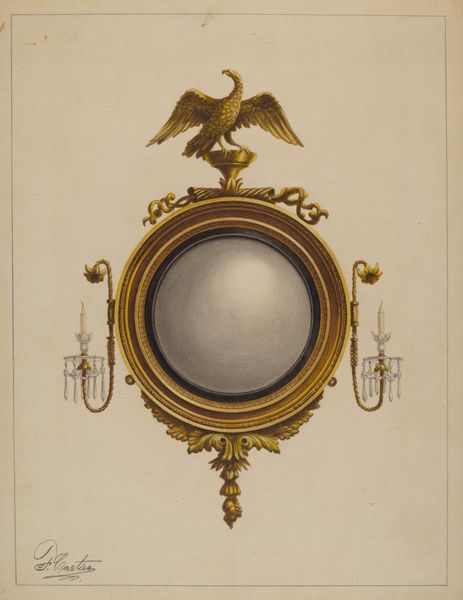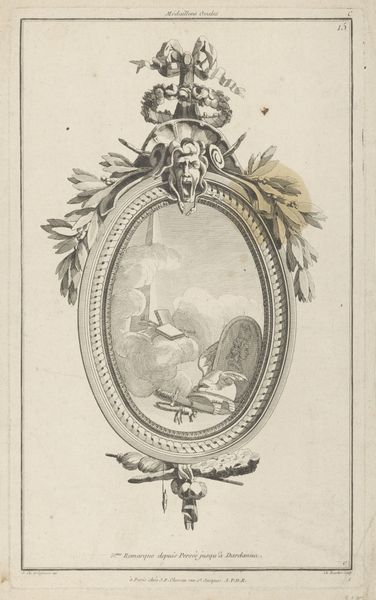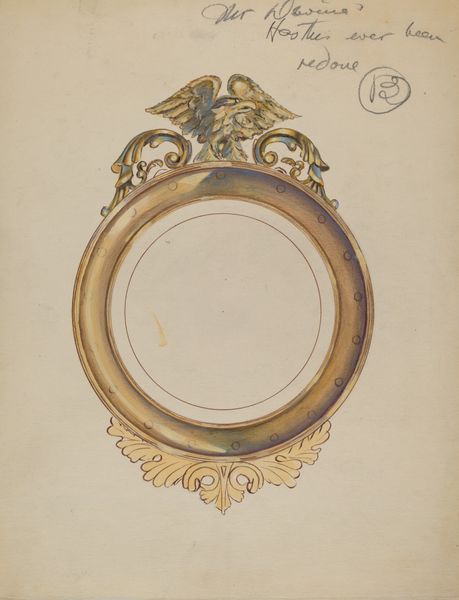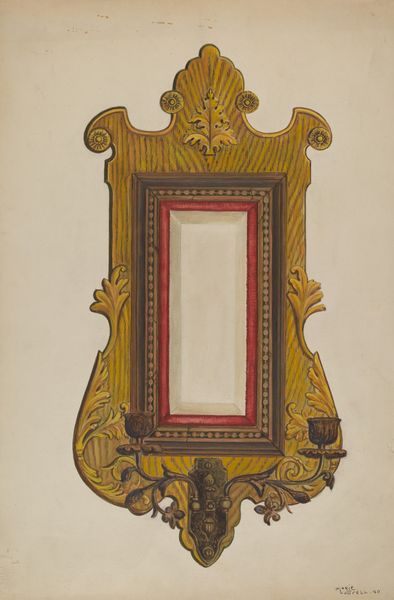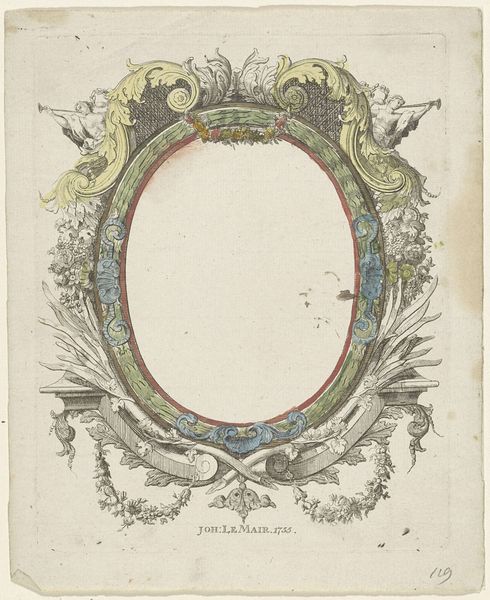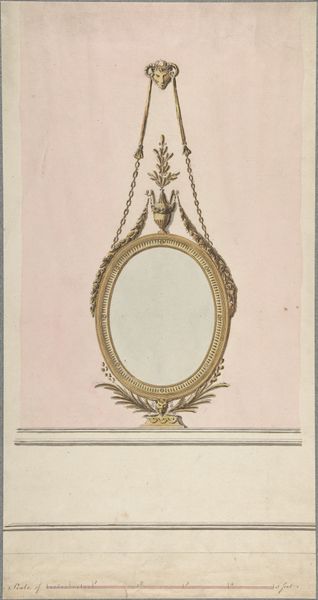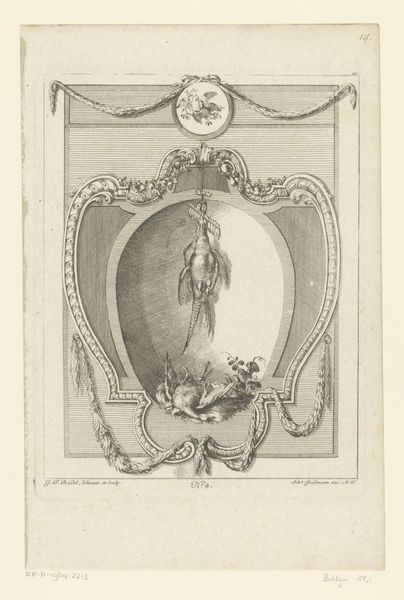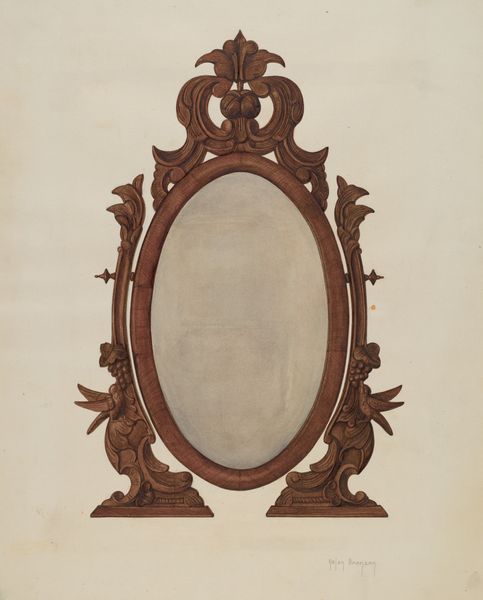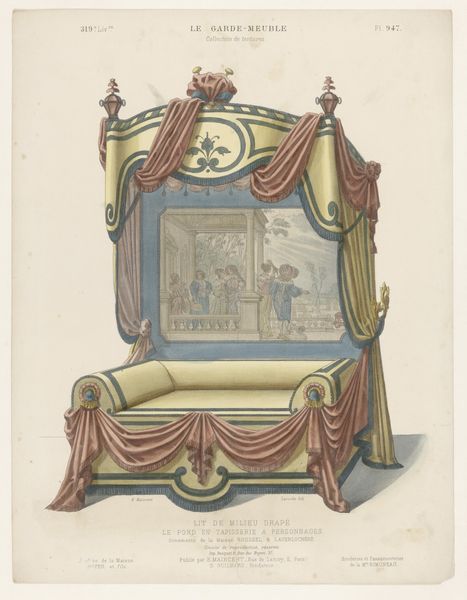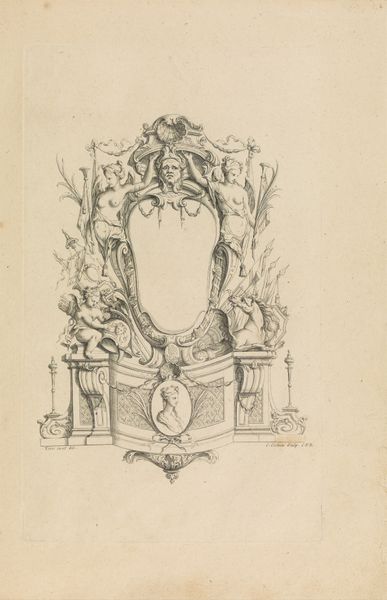
drawing, coloured-pencil
#
portrait
#
drawing
#
coloured-pencil
#
coloured pencil
#
academic-art
#
decorative-art
Dimensions: overall: 50.1 x 35.7 cm (19 3/4 x 14 1/16 in.) Original IAD Object: Extreme width 11 3/4; Extreme length 19 5/8". See data sh. for dets.
Copyright: National Gallery of Art: CC0 1.0
Editor: Here we have Lawrence Phillips' "Mirror Frame," circa 1938, created using colored pencils. It has such an imposing, almost nationalistic feel. What strikes you most when you look at it? Curator: What immediately grabs my attention is how this piece performs nationhood. The eagle, the portrait medallion, the shield with stars and stripes—they collectively manufacture a powerful visual narrative of American identity. What's so interesting to me is to unpack *how* this visual language works. What kind of ideology does it subtly promote, and who is included or excluded from that vision? Editor: So it’s more than just a pretty decorative frame; it’s making a statement? Curator: Precisely. The strategic use of symbolism invites us to critically examine its underlying power structures. This frame could be viewed as an embodiment of 1930s American idealism, particularly if this was created during the New Deal. But from a contemporary perspective, it also becomes a space to discuss themes of national identity, historical representation, and even the rhetoric of political discourse. Editor: It’s fascinating to think of it in terms of visual rhetoric. Is there a dialogue happening between the symbols? Curator: Absolutely. Think about the implications of placing a portrait—potentially a white, male figure—at the apex, just below the eagle. How does this visual hierarchy inform our understanding of who holds power within this framework of American identity? The draped flags on either side seem to provide "support," which might hint at some kind of fragility that requires protecting. Considering the date, and the state of the nation then, the iconography has a deeper connection to what Phillips may have felt was important for viewers. Editor: This has really shifted my perception of the piece! It’s incredible how much history can be embedded in something seemingly ornamental. Curator: Exactly! And that is where art history intersects with the present, giving us tools to interpret the narratives that shape our understanding of society and ourselves.
Comments
No comments
Be the first to comment and join the conversation on the ultimate creative platform.
